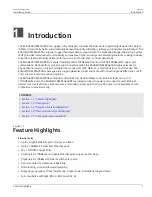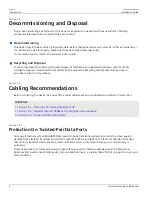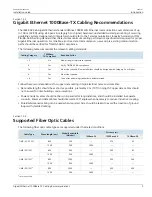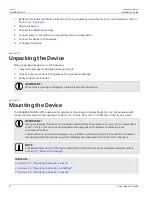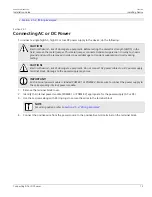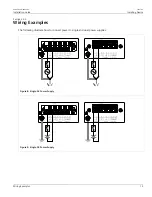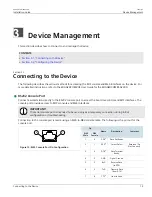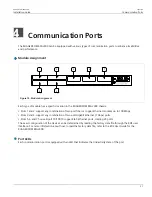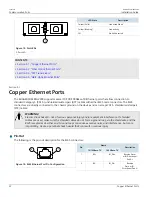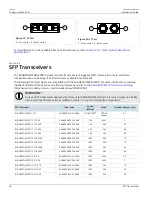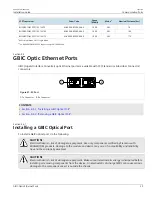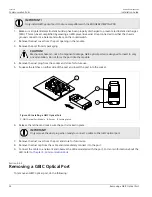
RUGGEDCOM RSG2300
Installation Guide
Chapter 2
Installing Device
Connecting AC or DC Power
13
•
Section 2.5.2, “Wiring Examples”
Section 2.5.1
Connecting AC or DC Power
To connect a single high AC, high DC or low DC power supply to the device, do the following:
CAUTION!
Electrical hazard – risk of damage to equipment. Before testing the dielectric strength (HIPOT) in the
field, remove the metal jumper. This metal jumper connects transient suppression circuitry to chassis
ground and must be removed in order to avoid damage to transient suppression circuitry during
testing.
CAUTION!
Electrical hazard – risk of damage to equipment. Do not connect AC power cables to a DC power supply
terminal block. Damage to the power supply may occur.
IMPORTANT!
Each internal power module is labeled POWER 1 or POWER 2. Make sure to connect the power supply to
the corresponding internal power module.
1. Remove the terminal block cover.
2. Identify the internal power module (POWER 1 or POWER 2) appropriate for the power supply (AC or DC).
3. Use these screws along with #6 ring lugs to secure the wires to the terminal block.
NOTE
For wiring options, refer to
Section 2.5.2, “Wiring Examples”
.
4. Connect the positive wire from the power source to the positive/live (+/L) terminal on the terminal block.
Summary of Contents for RuggedSwitch RSG2300
Page 4: ...RUGGEDCOM RSG2300 Installation Guide iv...
Page 10: ...Preface RUGGEDCOM RSG2300 Installation Guide x Customer Support...
Page 16: ...Chapter 1 Introduction RUGGEDCOM RSG2300 Installation Guide 6 Supported Fiber Optic Cables...
Page 28: ...Chapter 2 Installing Device RUGGEDCOM RSG2300 Installation Guide 18 Wiring Examples...



